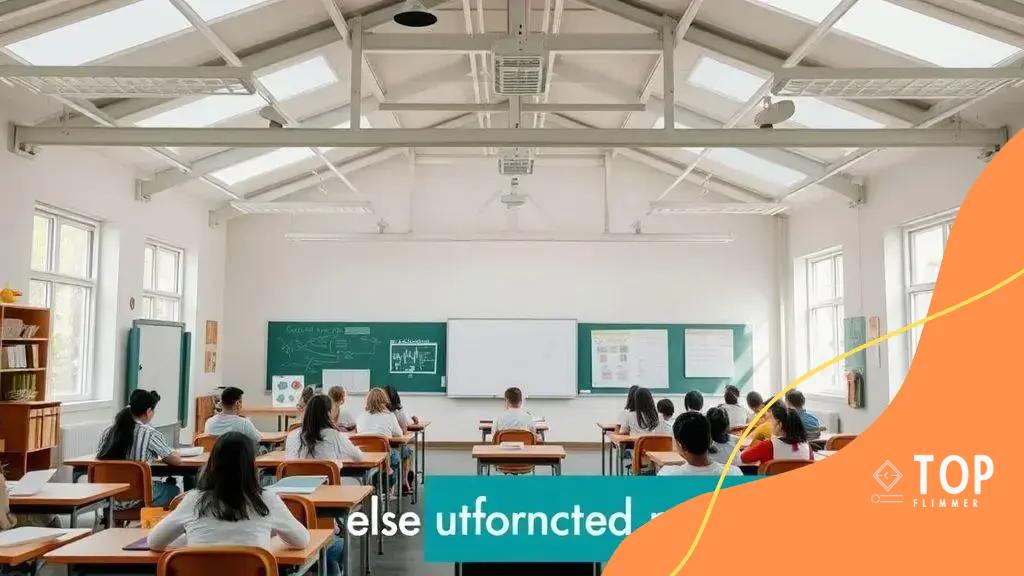Public school grants: unlocking educational opportunities

Public school grants provide essential funding for educational programs, resources, and initiatives, enabling schools to enhance student learning and overall educational outcomes.
Public school grants can be game-changers in enhancing the quality of education. Ever wondered how these grants work and what they can do for your school? Let’s dive in and explore the possibilities!
Understanding public school grants
Understanding public school grants is essential for educators and administrators aiming to enhance their schools. These financial resources can transform the learning environment and provide vital support for various programs.
What Are Public School Grants?
Public school grants are funds provided by government entities or private organizations designed specifically to support educational initiatives in schools. They are not loans, meaning schools do not need to pay them back. Instead, these grants aim to improve the quality of education and support student success.
Types of Public School Grants
Grants vary in purpose and funding sources. Here are a few common types:
- Federal Grants: Offered by the federal government, often focused on specific programs like Title I or special education.
- State Grants: Funded by state governments, typically supporting local educational needs.
- Private Grants: Provided by organizations or individuals, often targeting innovative projects or school-specific needs.
Each type plays a crucial role in funding diverse educational projects. Schools should identify which grants align with their goals and needs.
How Grants Benefit Schools
Utilizing public school grants effectively can lead to significant enhancements in education. For example, schools can allocate grant money toward classroom resources, extracurricular activities, or technology upgrades. This funding can help schools innovate and adapt to the ever-changing demands of education.
Schools often experience challenges when trying to secure these funds, such as competition and the complex application process. However, understanding the grant landscape can greatly increase the chances of receiving funding. It’s important to stay informed about potential grants and their requirements.
By building strong relationships with grant organizations, schools can tap into additional resources and support. Engaging with local communities also helps in identifying needs and aligning grant proposals with real-world challenges.
Overall, public school grants are an invaluable resource for schools seeking to enhance their curriculum and improve student outcomes. By understanding how to navigate the grant system, schools can maximize their funding potential and foster a better educational environment for all.
Types of grants available for schools
There are various types of grants available for schools, each designed to support different educational needs. Understanding these options can help schools choose the best funding for their projects.
Federal Grants
Federal grants are provided by the U.S. government and usually target specific programs. One example is the Title I grant, which focuses on aiding schools with high numbers of low-income students. These funds can be used for various purposes, including staffing, training, and resources. Other federal grants address areas like special education and technology enhancement.
State Grants
State grants are funded by local governments and can vary widely in purpose and amount. States often provide grants to support specific initiatives that align with their educational goals. Schools can apply for these funds to improve academic programs, start new initiatives, or enhance extracurricular activities.
- Grants for after-school programs
- Funds for teacher training and development
- Support for technology integration
States also offer grants that help schools address local issues, such as enhancing facilities or improving student wellness.
Private Grants
Private grants come from non-profit organizations, foundations, or businesses. These grants often focus on innovative projects aimed at transforming education. Schools can find private funding opportunities that align with their unique objectives.
Successful public school grant applications often highlight specific needs and articulate clear goals. It’s crucial to communicate how the funds will be used and the potential impact on students. Strong proposals can attract the attention of grant evaluators and increase funding chances.
It’s beneficial for schools to establish partnerships with local businesses and organizations, as these connections can lead to additional funding opportunities. Networking can also provide insights into emerging grants and successful application strategies.
Overall, knowing the types of grants available for schools ensures that educational institutions can effectively navigate the funding landscape, securing necessary resources for student success.
How to apply for public school grants

Applying for public school grants can seem daunting, but following the right steps can simplify the process. Understanding how to prepare and present a strong application is essential for success.
Research Available Grants
Before applying, it’s crucial to identify grants that match your school’s specific needs. Research federal, state, and private grants, paying close attention to eligibility requirements and application deadlines. Resources like state education departments and online grant databases can provide valuable information.
Prepare Your Proposal
A well-prepared proposal is the foundation of a successful grant application. Be sure to outline your objectives clearly and explain how the funds will be used. Include data to support your need for funding, such as student achievement metrics or gaps in resources.
- Define your goals and objectives.
- Explain how the grant will benefit students.
- Include a detailed budget outlining how funds will be allocated.
Address specific criteria from the grant guidelines in your proposal to improve your chances of success. Tailoring your application to each grant is key.
Gather Supporting Documentation
Along with your proposal, gather any required supporting documents. This may include letters of support from community members, evidence of previous successes in grant-funded projects, or academic performance metrics. Having thorough documentation strengthens your application.
Submit Your Application
Once everything is prepared, submit your application according to the guidelines provided by the grant organization. Ensure you keep copies of all submitted documents for your records. Double-check for any specific submission requirements, such as formatting or deadlines.
After submission, it’s beneficial to follow up with the grant agency. This shows your interest and helps clarify any pending questions about your proposal.
Applying for public school grants requires strategic preparation and attention to detail. By understanding the process and adhering to guidelines, schools can enhance their chances of obtaining necessary funding.
Real-life success stories from funded schools
Real-life success stories from funded schools illustrate the significant impact that grants can have on enhancing education. These examples show how financial support can transform learning experiences and improve student outcomes.
Innovative Programs in Action
Many schools have utilized grant funding to launch innovative programs that cater to their students’ unique needs. For example, a school in California received a grant to develop a robotics program. This initiative not only sparked student interest in STEM but also led to several students participating in statewide competitions. The program boosted team collaboration and problem-solving skills.
Improving Facilities
Another funded school in Texas used its grant money to renovate outdated classrooms. The new, modern spaces included flexible seating and technology upgrades. This transformation created a more engaging learning environment that encouraged collaboration and creativity among students. Teachers reported higher student engagement and interest in learning as a direct result of the improved facilities.
Supporting Mental Health Programs
A school in New York utilized a grant to implement mental health awareness programs. With the funding, they hired additional counselors and launched workshops focusing on student well-being. As a result, students felt more supported and were better equipped to handle academic pressures.
These success stories show that funded schools can achieve remarkable results when they effectively use grant money. By investing in innovative programs, upgrading facilities, and supporting mental health initiatives, schools can create an environment where students thrive.
Sharing these examples can inspire other schools seeking grants to think creatively about how they might use funding to benefit their students. Each story empowers educators to look beyond traditional methods and embrace new, effective approaches to education.
Challenges and tips for grant applications
Applying for grants can be challenging, but understanding common obstacles and implementing effective strategies can significantly improve a school’s chances of success. Knowing what to expect can help navigate this complex process.
Common Challenges
One of the main challenges in applying for grants is identifying the right opportunities. Many schools struggle to find funding sources that align with their specific needs or projects. Additionally, competition for grants can be intense, making it crucial to present a unique and compelling proposal.
Application Complexity
Grant applications often require detailed documentation and strict adherence to guidelines. This includes creating a comprehensive budget, providing data on student achievement, and addressing specific evaluation criteria. These requirements can be overwhelming, especially for schools with limited staff or resources.
- Time constraints: Preparing a grant application can be time-consuming.
- Lack of experience: Some schools may not have staff trained in grant writing.
- Difficulty in demonstrating impact: Schools must effectively communicate how the funding will benefit students.
To overcome these challenges, schools can adopt a few strategies. First, it’s essential to conduct thorough research to find applicable grants. Utilize online databases and resources from educational organizations that compile grant listings. Joining local education networks can also provide insights and advice on available opportunities.
Strategies for Successful Applications
Once opportunities are identified, schools should focus on crafting clear and concise proposals. Use straightforward language, and clearly define project goals and objectives. Emphasizing the potential impact on students will help evaluators see the value in supporting the proposal.
Additionally, gathering strong letters of support from community members, parents, or local businesses can enhance an application. These endorsements can demonstrate community backing and underscore the importance of the project.
Schools can also benefit from collaborating with other institutions or organizations. Partnerships can provide additional resources and expertise, making a stronger case for funding. By working together, schools can combine their strengths and create a more compelling application.
Ultimately, while the grant application process can be daunting, being aware of potential challenges and employing effective strategies can lead to successful outcomes. Schools should view this process as an opportunity to enhance their educational offerings and better serve their students.
\n
| Topic | Details |
|---|---|
| 🎓 Improving Education | Grants help schools enhance learning resources and programs. |
| 💡 Innovative Solutions | Funding allows for innovative teaching methods and technologies. |
| 🤝 Community Support | Collaboration with the community strengthens grant proposals. |
| 📝 Application Challenges | Understanding the grant application process enhances success. |
| 🌟 Success Stories | Examples of funded schools reveal the positive impact of grants. |
\n
\n
FAQ – Frequently Asked Questions about Public School Grants
What are public school grants?
Public school grants are funds provided by government or private organizations to help improve educational programs and resources in schools.
How can schools apply for grants?
Schools can apply for grants by researching available funding opportunities, preparing a strong proposal, and submitting the required documentation.
What challenges do schools face when applying for grants?
Common challenges include identifying suitable grants, meeting application requirements, and demonstrating the potential impact of the proposed projects.
What are some success stories from funded schools?
Funded schools have launched innovative programs, renovated facilities, and implemented mental health initiatives, leading to significant improvements in student engagement and well-being.






